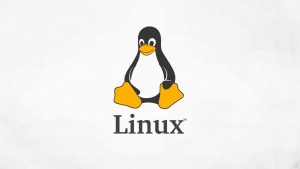How to Install Linux Without Usb or Cd
 Did you know that the most popular operating system in the world is actually built on Linux? Yes, Android! You guessed right! Just like Windows, iOS, and Mac OS, Linux, of course, is also an operating system.
Did you know that the most popular operating system in the world is actually built on Linux? Yes, Android! You guessed right! Just like Windows, iOS, and Mac OS, Linux, of course, is also an operating system.
Just to remind you, an operating system manages the communication between your software and your hardware i.e your desktop or laptop. Without the operating system (OS), the software cannot function.
Linux is different from Windows and Apple, in that it is not privately owned software, but rather a family of open source systems. In other words, anyone can modify, customize, and distribute it. Linux may be the least known on this list, but it is free and available in a large number of different open-source versions.
From smartphones to vehicles, supercomputers, home appliances, to your home desktops and laptops, the Linux operating system is everywhere. Besides being the platform of choice to run desktops, servers, and embedded systems all across the globe, it runs most of the Internet, and the world's stock exchanges. It is one of the most reliable, secure, and stress-free operating systems available.
Did you know that Linux has quite a lot of variations? These variations are called "distributions." This gives you an overwhelming freedom of choice which simply isn't available using MacOS or Windows.
There are different variations of Linux built for students, for musicians and creative professionals. In fact, you can roll your own distribution from scratch and literally make it your own. I mean literally.
These different distributions of Linux are there to comfortably suit any type of user. From beginner to expert users, you'll find a "flavor" of Linux that blends with your needs. Nearly every distribution of Linux can be downloaded for free, burned onto a disk or a USB drive (or without a USB) and installed (on as many computers as you like).
Some popular Linux distributions include: LINUX MINT, UBUNTU, MANJARO, DEBIAN, ANTERGOS, SOLUS, FEDORA, ELEMENTARY OS, OPENSUSE
Furthermore, Linux is surprisingly customizable. It's free to download and easy to install. I will take you a few methods on how to go about your installation. Here you will get all the information you need to get up to speed on the Linux platform.
Installing Linux
 For many people, the idea of installing an operating system might seem like an intimidating task. Believe it or not, Linux OS offers one of the easiest installations of all operating systems.
For many people, the idea of installing an operating system might seem like an intimidating task. Believe it or not, Linux OS offers one of the easiest installations of all operating systems.
As a matter of fact, many versions of Linux offer what is called a Live distribution – which means you can run the operating system from either a CD/DVD or USB flash drive without making any changes to your computer's hard drive.
In this particular article, we will be looking at how we can install Linux without a USB flash drive or a CD/DVD.
Two ways to install Linux without USB
Following are two methods by which you can install Linux with ease, without a USB flash drive :
Method 1: Using UNetbootin to install Linux in your PC directly from the hard drive.
- First download UNetbootin from http://unetbootin.github.io/ .
- Then, download ISO image for the Linux distributions or flavors supported by UNetbootin.
It actually supports many Linux distributions together with Linux based tools such as emergency antivirus ISO images. If you are not really sure about which one to use, then download Ubuntu ISO straight up from https://www.ubuntu.com/download/desktop .
3. Next, you have to launch UNetbootin and choose Diskimage, select ISO, and then browse through to pick the ISO image file for the Linux.
Choose Hard Disk for Type, C: for Drive and then you click on the OK button
- This will copy files from the selected ISO image straight to your hard drive, add a bootloader to your hard drive, and then you will see an "installation complete" message displayed.
- Now after you reboot your Windows PC, it will show a UNetbootin boot entry. You can choose this new entry to boot into the Linux OS and finish installing Linux on your hard drive. Make sure you choose to install it alongside Windows and do not overwrite the Windows partition.
- Once the installation is finished, it will reboot into the installed version of Linux through Grub. You can use these instructions for adding Windows to Grub menu after installing Ubuntu or Debian based Linux distributions.
- Once Linux has been installed, you can boot back in Windows and launch UNetbootin one more time to delete UNetbootin from your system.
Method 2: Using a downloaded iso-image with a distribution on your computer and a special program GRML-rescueboot.
Try to follow the instructions below:
1. First of all, you should already have one of the Linux OS installed and running: Linux Mint/ Ubuntu or another distribution.
2. You should also have an ISO image with the distribution you want to install.
3. Next is to Install the GRML-rescueboot program from the Software Manager or run the below command in the terminal: sudo apt-get install grml-rescueboot
4.After installing GRUB-rescue boot, you will then find an empty folder called grml (/boot/grml) by opening it as root:
Or you can enter this in the terminal window: sudo nemo /boot/grml
Or use another file manager of your distribution.
When the file manager with administrator rights opens, open the folder with the downloaded ISO image and just copy the file to the grml folder.
- Next is to Update GRUB:
In the terminal window, you will enter: sudo update-grub An additional line would appear in the boot loader menu as seen below:
- Restart your computer. You will then see a new option in your GRUB boot:
 Now you can install this distribution directly from your hard drive by just clicking on the option with the downward arrow and pressing Enter.
Now you can install this distribution directly from your hard drive by just clicking on the option with the downward arrow and pressing Enter.
As shown in the picture above, this was booted up in live-mode Elementary OS 0.4.1, with the possibility of further installation. This should clear your doubts if you are part of the people that say not all distributions can be installed in this way. Give it your shot. Best of luck!
How to Install Linux Without Usb or Cd
Source: https://linuxnetmag.com/how-to-install-linux-without-usb/